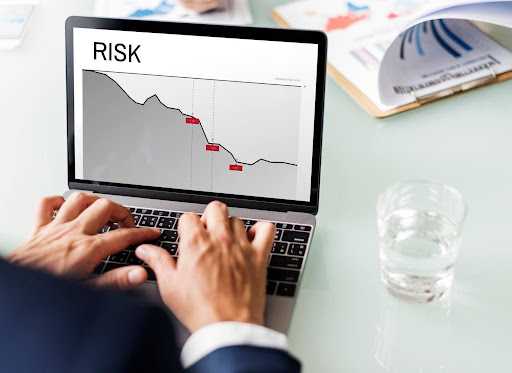

What Is a High-Risk Transaction?
Whether it’s conducting important international transactions, playing a fun game on a PC, or doing online shopping, every business wants and needs to enable safe and tangible transactions. However, certain businesses and industries are characterized as high-risk, hence they are prone to fraudulent activities, chargeback, and regulatory problems.
VELLIS NEWS
1 Apr 2025
By Vellis Team
Vellis Team
Automate your expense tracking with our advanced tools. Categorize your expenditures
Related Articles

Vellis News
31 March 2025
Optimizing Currency Conversion: Strategies for High-Risk International Businesses
High-risk businesses often expand globally and transact with customers from all over the world. Because of this, they need the assistance of high risk payment processors that can handle currency conversion alongside big transaction volumes, chargebacks, and other concerns for high-risk sectors.

Vellis News
31 March 2025
Selecting a High-Risk Payment Gateway for Shopify
High-risk industries face unique challenges when it comes to payment processing. Traditional financial institutions often decline to work with these businesses due to the increased risks of chargebacks and fraud. This makes finding a reliable high risk payment gateway Shopify supports essential for smooth and secure transactions.

Vellis News
27 March 2025
Critical eCommerce Failures You Need to Avoid
Everyday eCommerce Businesses face different confrontations online. One of the biggest challenges you face is to get your product sold, as this is the sole purpose of starting an online shop right. However, did you know an e-commerce store is not only about sales conversion?
Factors That Make a Transaction High-Risk
Nowadays, a plethora of industries have switched on conducting their business online in order to reach a wider, more international audience and clientele, hence came the issue of being exposed to high-risk transnational deeds. Here are some factors that make certain transactions shady and risky.
Industry-Specific Risks
Transactions in high-fraud industries face the most challenges. Certain industries face higher risks due to chargebacks, fraud, or regulatory issues mainly due to the inability to track and monitor all activities and the sheer nature of the business. Industry-specific risks are present in industries such as gambling, adult entertainment, travel, e-commerce, subscription services, and financial services. Luckily, more such industries have discovered how to choose the right payment gateway and optimize their transaction in a safe and efficacious way.
Large or Unusual Transactions
Another factor that may make a certain transaction high-risk is when purchases exceed an abnormal amount. Put plainly, all high-value purchases that deviate from regular transaction patterns are considered shady and impose high-risk. What’s more, any bulk purchase as well as high-volume order that have a frequent transactional process raise a red flag and may get pursuant to additional fraudulent checks.
Cross-Border Transactions
International payments, especially to countries that are labeled as high-risk, tend to carry higher fraud, security, and compliance risks. Such countries usually have different regulatory and security risks and need to go through stricter measures and select payment processing providers that handle cross-border transactions. By choosing payment processing with Vellis, numerous industries won’t have to worry about sending or receiving payments involving high-fraud regions as they would receive continual reliability, security, and professionalism.
Anonymous or Unverified Customers
Any transactions where the customer provides incomplete, incorrect, or suspicious information are considered as high-risk. What’s more, all payments made through proxies, VPNs, or suspicious accounts also need to go through extensive and detailed check and observation, that’s why extra attention is placed about such transactions.
Risks Associated with High-Risk Transactions
Since there are plenty of industries and businesses that fall under a high-risk category, here are some of the risks associated with high-risk transactions.
Increased Chargebacks
High-risk transactions are more likely to be disputed because of highlighted fraud risk that is connected to shady individuals wanting to breach accounts because there’s limited or no verification procedures and such users conduct unauthorized payments that lead to numerous consequences. Therefore, chargebacks on businesses and payment processors are significant as businesses suffer major losses, lose revenue, become obliged to increase operational costs, and have their reputations damaged.
Fraud and Security Concerns
The main reason why high-risk transactions are more vulnerable to fraudulent activities is due to the lack of or insufficiently justifiable physical verification that plenty of fraudsters take advantage of. Additionally, cross-border transactions, anonymous payment methods such as cryptocurrencies, as well as misuse of stolen payment information and identity theft raise security concerns and therefore represent a huge risk. Other fraud types that include fake chargebacks and unauthorized purchases shouldn’t be neglected and ought to have taken strong fraud detection measures to minimize vulnerabilities.
Regulatory and Compliance Issues
High-risk transactions are bound to attract more regulatory scrutiny due to processing unusual transactions, getting involved in anonymous and uncategorized payment methods, and not having adequate protection measures. Regulatory scrutiny for businesses with high fraud or dispute rates must be implemented by including official regulatory bodies, to avoid facing lawsuits or fines, some industries need to utilize strict compliance requirements such as anti-money laundering (AML) or know-your-customer (KYC) procedures to double-check and verify customers identity, have them succumb to fines and add extra protection.
How to Identify High-Risk Transactions
Luckily, there are a few ways and measures to be taken to identify fraudulent and high-risk transactions.
Transaction Monitoring and Alerts
First, using the power of AI and machine learning can significantly help banks and payment processing systems, especially for real-time transactions. Furthermore, it can be immensely useful to set up automated risk alerts based on transaction behaviors and spot and track fraudulent activities in that matter.
Customer Verification
Probably the most eligible way to identify high-risk transactions is by incorporating strong authentication methods such as two-factor authentication or biometric verification. Users that go through severe identity checks and have their transactions confirmed as legitimate can rest assured that transactions will not be risky.
Geographic and Behavioral Indicators
It’s wise to stay alert from flagging transactions from high-fraud countries and carefully inspect all transactions that come from known fraudulent activities. Any strange and shady behavioral indicators such as multiple payment attempts, reluctance to provide personal information, fast or rushed transactions or getaways, and inconsistent suspicious customer information ought to be detected, monitored, and cleared.
Best Practices for Managing High-Risk Transactions
Implementing Fraud Prevention Tools
To manage high-risk transactions, probably the best practice is to incorporate AI-driven fraud detection systems such as real-time monitoring, data analytics, pattern recognition and similar. It is also advisable to address Verification Service (AVS) and Card Verification Value (CVV) checks to detect and get faster response, higher accuracy, and adequate scalability.
Chargeback Prevention Strategies
Some of the chargeback prevention strategies entail communicating clear refund policies, advancing payment security, enhancing fraud detection, and maintaining a strong dispute resolution method. The last is extremely vital to quickly be able to respond to chargeback.
Compliance and Regulatory Adherence
It should be mandatory to follow PCI DSS, AML, and KYC guidelines and conduct regular reviewing compliance measures and security protocols and in that way perfectly manage high-risk transactions.
FAQs
What industries are most affected by high-risk transactions?
Industries such as gambling, e-commerce, adult entertainment, and financial services often experience high-risk transactions due to fraud and chargeback exposure.
How can businesses prevent fraudulent high-risk transactions?
By implementing fraud detection tools, verifying customer identities, and using risk-based authentication methods.
Why do international transactions pose a higher risk?
Cross-border transactions may involve different regulations, higher fraud rates, and longer dispute resolution times.
Can high-risk transactions be legal?
Yes, high-risk transactions are legal but require careful monitoring and compliance to avoid fraud and financial losses.
How do payment processors handle high-risk transactions?
They use fraud monitoring, chargeback management, and strict compliance measures to reduce risks.

Ready to transform your financial management?
Sign up with Vellis today and unlock the full potential of your finances.
Related Articles

Vellis News
27 March 2025
8 Surefire Ways to Inspire and Lead Your Team
Inspire. The mention of this word triggers a set of reactions especially for people who know of a teacher or mentor who brought out the best in them and showed the inner power they have. In business, change is accompanied by stress, uncertainty, and anxiety in those it’s directed to and those implementing change.

Vellis News
25 March 2025
What Are Real-Time Payments (RTP)?
In this thriving tech frenzy world, where digital transformations are shaping the world of finance, it has become utterly challenging to keep track of numerous payment alterations. Real time payments or RTPs focus on enabling easier, faster, and more productive payment methods that enable immediate transfer of funds 24/7.

Vellis News
31 March 2025
Selecting a High-Risk Payment Gateway for Shopify
High-risk industries face unique challenges when it comes to payment processing. Traditional financial institutions often decline to work with these businesses due to the increased risks of chargebacks and fraud. This makes finding a reliable high risk payment gateway Shopify supports essential for smooth and secure transactions.
We use cookies to improve your experience and ensure our website functions properly. You can manage your preferences below. For more information, please refer to our Privacy Policy.
© 2025 Vellis Inc.
Vellis Inc. is authorized as a Money Services Business by FINTRAC (Financial Transactions and Reports Analysis Centre of Canada) number M24204235. Vellis Inc. is a company registered in Canada, number 1000610768, headquartered at 30 Eglinton Avenue West, Mississauga, Ontario L5R3E7, Canada.

